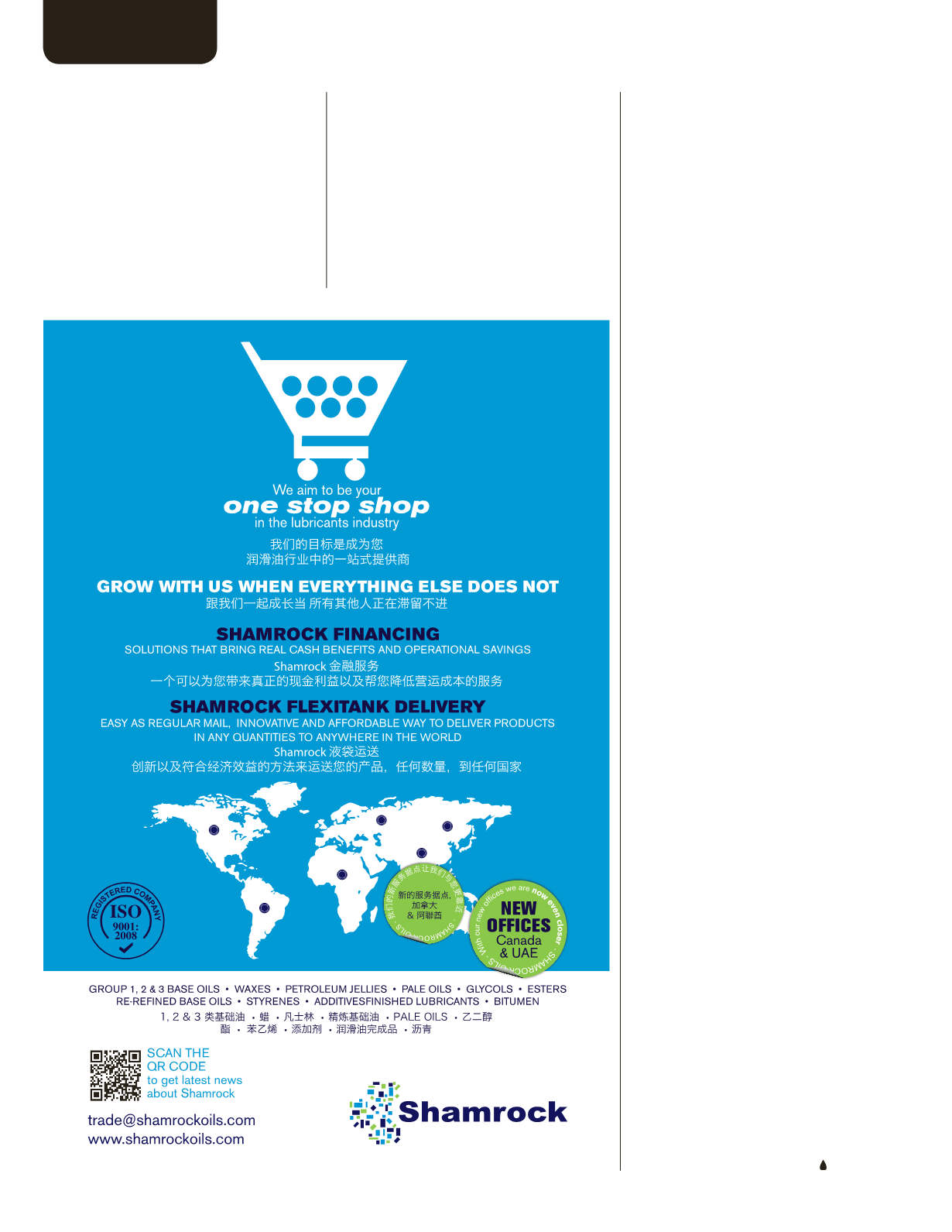
FUELS & LUBES INTERNATIONAL
Quarter Three 2014
40
F E A T U R E
reliability.
“This process can be extremely complex
and time consuming with a wide range of
political, commercial and technical agenda in
play,” Locke said, noting that two new speci-
fications are currently being developed in the
U.S. (GF-6 and PC-11). Additionally, develop-
ment of the next generation of ACEA specifi-
cations is just getting underway as well.
For lack of a better option, the process
followed across the Americas and Europe has
been largely adapted by Asia. But this is not a
long-term, sustainable situation, he said.
“In a world in which Asia is becoming
an increasingly critical and indeed assertive
player and is starting to bring indigenous or
modified hardware to market as opposed to
simply utilizing Western technology directly,
is this leveraging an optimal long-term solu-
tion?” Locke asked.
While the American and European mar-
kets are relatively homogenous, with similar if
not the same fuel standards, that’s not the case
in the Asia-Pacific region.
The region has seen enormous growth in
the last 10 to 15 years, and with this growth
there is an unprecedented level of complexity
within it, he said. Asia is now by far the most
complex, diverse lubricant market in the world
with different hardware solutions employed
in different parts of the Asia-Pacific region
depending on the puzzle of different types of
fuel composition and emissions standards and
level of adherence to various specifications in
different areas.
Asia cannot be expected to continue to follow
other regional specification systems, particularly
in a market where it has the greatest growth,
greatest diversity of needs, highest degree of
market complexity and highest hardware diver-
sity, he said.
“The concept of the Western ‘home mar-
ket’ specification, driven by volume of vehicles
sold and then deployed in smaller markets, is
becoming increasingly outdated if not already
superseded,” he added.
The solution is not to create a bunch of new
Asia-focused specifications for each region based
on new Asian engine tests, he said. Furthermore,
the concept of having a single global specifica-
tion is unrealistic. However, it’s important to
include an Asian dimension into specifications.
That could mean incorporating an Asian engine
test in a mainstream specification, for instance.
“We should stop thinking about engine tests
only in the context of their local market but as
tools to be appropriately deployed in different
global contexts,” Locke said. That means “think-
ing about how we can most effectively use all the
tools at our disposal regardless of where they
originated,” Locke added.
It’s only a matter of time before Asia receives
the recognition it deserves.
“Asia is a region of increasing importance
and assertiveness,” he said. “In my view, the
question is not if Asia takes a greater part in
specification setting, but when.”
The concept of the
Western ‘home
market’ specifica-
tion, driven by
volume of vehicles
sold and then
deployed in smaller
markets, is becom-
ing increasingly
outdated if not al-
ready superseded.


